 PicoContainer Web
PicoContainer Web
Choosing which scope for you components requires you to understand
understand how scopes work. Consider a contrived stateful web
application that is
all about buying cars. A subset of the functions it must perform are
'add car to cart', 'remove car from cart' and 'go to checkout'
The Components we are going to need for this minimalistic web
application are 'ShoppingCart' and 'Store'. The actual functions
above are also going to be transient components 'AddToCart',
'RemoveFromCart' and 'GotoCheckout'.
Assuming a composition script for
these components, the initial state of the stack is one where all the
components are in place, but nothing has been instantiated yet.
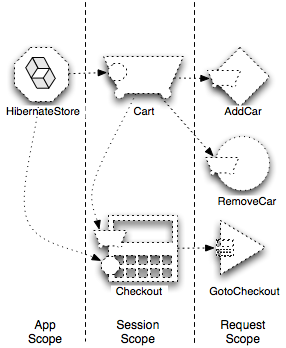
The components we've described above are shapes, and the
dependencies describes with arrowed lines. For these diagrams it
does not matter which type of Dependency
Injection is being used.
Next, consider the web container starting up, or where there are no
active sessions:
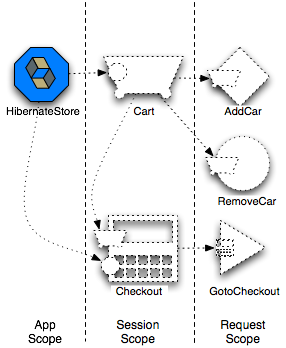
Colored shapes are instantiated, whereas dotted shapes are not (for that session). Solid arrows are actual injections, whereas dotted arrows are ones that could injections were the corresponding components to be instantiated.
Then after the first web request from a new session, a session
scoped component is instantiated, and an action that will modify it
based on input:
Cart is stateful at the session level, because it contains a list of items to potentially purchase.
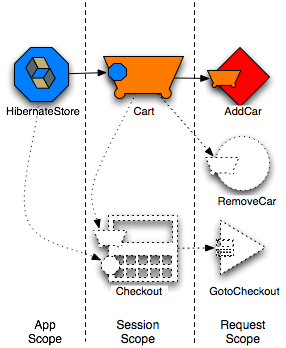
Alternatively, a car could be removed from the cart. In this case the AddToCart component that had previously been instantiated, is has already been garbage collected for this session...
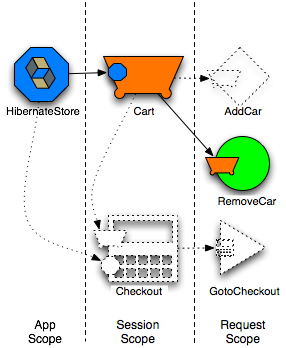
Finally, the user could go to the checkout with the contents of the cart ...
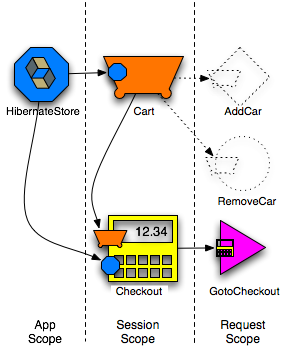
Checkout is stateful at the session level because it not only refers
to the contents of a cart, but also contains new details like a payment
mechanism for the pending purchase.